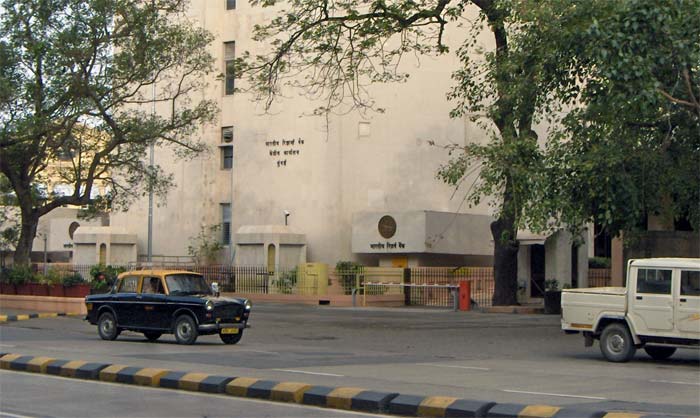As the market and analysts expected the RBI has not changed the interest rates for the banks and has left to BJP government to take measures for bringing economic growth.
RBI’s Monetary Policy Committee (MPC) has left REPO rate at 6%, reverse REPO rate at 5.75% and MSF at 6.25%.
RBI said in its press release,
“The decision of the MPC is consistent with a neutral stance of monetary policy in consonance with the objective of achieving the medium-term target for consumer price index (CPI) inflation of 4 per cent within a band of +/- 2 per cent, while supporting growth.”
Fourth Bi-monthly Monetary Policy Statement, 2017-18 Resolution of the Monetary Policy Committee (MPC) Reserve…https://t.co/0qwA6BVXqt
— ReserveBankOfIndia (@RBI) October 4, 2017
Consumer confidence and overall business assessment of the manufacturing and services sectors surveyed by the Reserve Bank weakened in Q2 of 2017-18; on the positive side, firms expect a significant improvement in business sentiment in Q3.
RBI cuts the real Gross Value Added (GVA) growth for FY2017-18 to 6.7%
The forecast of real GVA or GDP growth for 2017-18 has been revised down to 6.7% from the August 2017 forecast of 7.3%. RBI has revised this taking into account below performance of the economy,
Q1 FY 2017-18
- GVA growth slowed significantly in Q1 of 2017-18, cushioned partly by the extensive front-loading of expenditure by the central government.
- GVA growth in agriculture and allied activities lost the stream quarter-on-quarter in the usual first quarter moderation, partly reflecting deceleration in the growth of livestock products, forestry and fisheries.
- Industrial sector GVA growth fell sequentially as well as on a y-o-y basis. The manufacturing sector – the dominant component of industrial GVA – grew by 1.2 per cent, the lowest in the last 20 quarters.
- The mining sector, which showed signs of improvement in the second half of 2016-17, entered into contraction mode again in Q1 of 2017-18, on account of a decline in coal production and subdued crude oil production.
- Services sector performance, however, improved markedly, supported mainly by trade, hotels, transport and communication, which bounced back after a persistent slowdown throughout 2016-17.
- Construction picked up pace after contracting in Q4 of 2016-17.
- Financial, real estate and professional services turned around from their lackluster performance in the second half of 2016-17.
- Of the constituents of aggregate demand, growth in private consumption expenditure was at a six-quarter low in Q1 of 2017-18. Gross fixed capital formation exhibited a modest recovery in Q1 in contrast to a contraction in the preceding quarter.
Q2 FY2017-18
- The south-west monsoon, which arrived early and progressed well till the first week of July, lost momentum from mid-July to August – the crucial period for kharif sowing.
- By end-September, the cumulative rainfall was deficient by around 5 per cent relative to the long period average, with 17 per cent of the geographical area of the country receiving deficient rainfall. The live storage in reservoirs fell to 66 per cent of the full capacity as compared with 74 per cent a year ago.
- The index of industrial production (IIP) recovered marginally in July 2017 from the contraction in June on the back of a recovery in mining, quarrying and electricity generation. However, manufacturing remained weak.
- In August, however, the output of core industries posted robust growth on the back of an uptick in coal production and electricity generation. The manufacturing PMI moved into expansion zone in August and September 2017 on the strength of new orders.
- On the services side, the picture remained mixed. Many indicators pointed to improved performance even as the services PMI continued in the contraction zone in August due to low new orders. In the construction segment, steel consumption was robust.
- In the transportation sector, sales of commercial and passenger vehicles as well as two and three-wheelers, railway freight traffic and international air passenger traffic showed significant upticks. However, cement production, cargo handled at major ports, domestic air freight and passenger traffic showed weak performance.
- Retail inflation measured by year-on-year change in the consumer price index (CPI) edged up sequentially in July and August to reach a five month high, due entirely to a sharp pick up in momentum as the favourable base effect tapered off in July and disappeared in August. After a decline in prices in June, food inflation rebounded in the following two months, driven mainly by a sharp rise in vegetable prices, along with the rise in inflation in prepared meals and fruits.
- Fuel group inflation remained broadly unchanged in August even as inflation in liquefied petroleum gas (LPG), kerosene, firewood and chips rose. Petroleum product prices tracked the hardening of international crude oil prices.
- In August, headline inflation was projected at 3 per cent in Q2 and 4.0-4.5 per cent in the second half of 2017-18. Actual inflation outcomes so far have been broadly in line with projections, though the extent of the rise in inflation excluding food and fuel has been somewhat higher than expected. The inflation path for the rest of 2017-18 is expected to be shaped by several factors.
“The implementation of the GST so far also appears to have had an adverse impact, rendering prospects for the manufacturing sector uncertain in the short term. This may further delay the revival of investment activity, which is already hampered by stressed balance sheets of banks and corporates.”
The decision as widely expected was due to a number of factors,
Consumer Retail Inflation (CPI)
The CPI in August 2017 touched 3.36% which is just a tad lower than RBI’s maximum target of 4% indicating that RBI is in no mood to allow for more money in the market pushing the inflation. At the same time, government is already planning for a stimulus package that might push it up as well as fiscal deficit.
Banks are stressed with NPAs
There is no improvement in the NPAs situation of the banks particularly the public sector banks, controlling 70% of the market. More than 12 banks are under the Prompt Corrective Action (PCA) monitoring because of low profitability and growing NPAs.
Any rate cuts would most likely not be passed to the borrowers since the banks would use that to improve their profitability issue. Therefore, any rate cuts unless done specifically to pass on would not help in improving the condition of economy.
Government planning a Stimulus
To revive growth in the Indian economy, the BJP led government is planning for a stimulus at industry level to start the investment cycle. The GDP growth has been declining from past six quarters and it reached a 3-year low of 5.1% in first quarter of FY2017-18.
Any stimulus by the government might find it extremely difficult to control the fiscal deficit and meet the targets of 3.2% this fiscal year.
High Capacity and lower utilization in the economy
Most of the businesses in India are dealing with a situation where the capacity for production is high but the utilization is quite low. This simply means, demand has not yet revived and businesses are not borrowing money from banks for expansion purposes.
This is evident in the credit growth that had plunged to minus 2.2% in first quarter of FY2017-18. So passing the rate cuts from banks to businesses won’t pick up the investment.
Higher Current Account Deficit (CAD)
CAD is basically the difference of imports and exports a country does. India had remarkably improved its CAD from high of 4.8% of GDP in FY2012-13 to 0.7% in FY2016-17.
However, this is fast changing and just in the first quarter of FY2017-18, the CAD reached 2.4% of the GDP due to higher imports of Gold and crude in value terms. This is very alarming for the economy, the more the CAD, the more the rupee would get depreciated leading to further difficult situation to deal with.
US Fed rate hike anticipated
Post the global recession in 2008, US economy has kept its interest rates at zero percent for almost 7 years and only recently it has started increasing them.
In last 18 months, rates have gone from zero to 1.5% and there is further expectation that US Federal bank might increase it by 25 basis points before December 2017.
This would make US a better investment zone and if not at par, will bring the interest rate gap down in comparison to other economies. Therefore, any cut in rates by RBI would led to huge capital investment moving to US, making it further difficult for Indian Economy.








Pingback: Mobile Wallet Transfers from Paytm to Mobikwik to JioMoney Now Possible